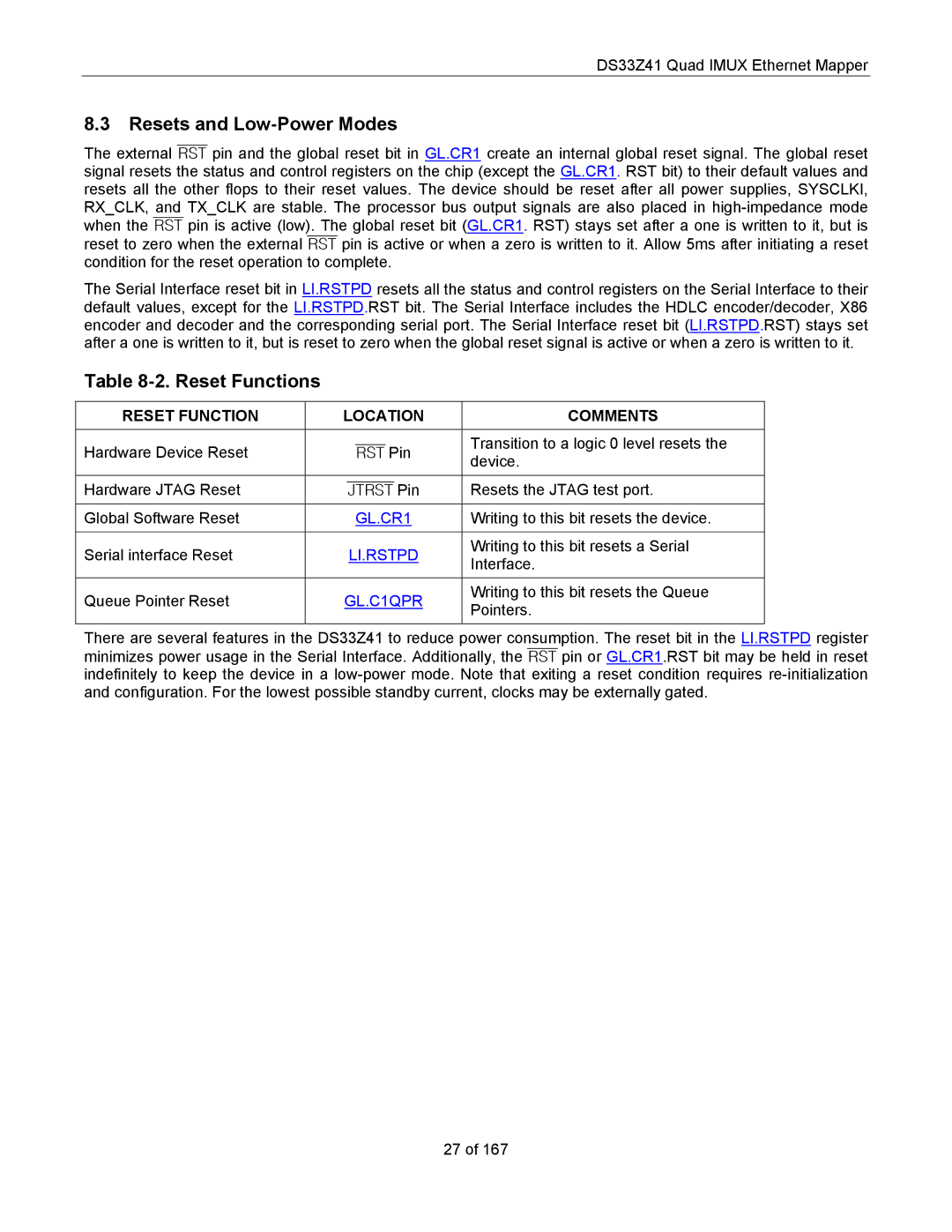DS33Z41 Quad IMUX Ethernet Mapper
8.3Resets and Low-Power Modes
The external RST pin and the global reset bit in GL.CR1 create an internal global reset signal. The global reset signal resets the status and control registers on the chip (except the GL.CR1. RST bit) to their default values and resets all the other flops to their reset values. The device should be reset after all power supplies, SYSCLKI, RX_CLK, and TX_CLK are stable. The processor bus output signals are also placed in
The Serial Interface reset bit in LI.RSTPD resets all the status and control registers on the Serial Interface to their default values, except for the LI.RSTPD.RST bit. The Serial Interface includes the HDLC encoder/decoder, X86 encoder and decoder and the corresponding serial port. The Serial Interface reset bit (LI.RSTPD.RST) stays set after a one is written to it, but is reset to zero when the global reset signal is active or when a zero is written to it.
Table 8-2. Reset Functions
RESET FUNCTION | LOCATION | COMMENTS | |
|
|
| |
Hardware Device Reset | RST Pin | Transition to a logic 0 level resets the | |
device. | |||
|
| ||
Hardware JTAG Reset | JTRST Pin | Resets the JTAG test port. | |
|
|
| |
Global Software Reset | GL.CR1 | Writing to this bit resets the device. | |
|
|
| |
Serial interface Reset | LI.RSTPD | Writing to this bit resets a Serial | |
Interface. | |||
|
| ||
|
|
| |
Queue Pointer Reset | GL.C1QPR | Writing to this bit resets the Queue | |
Pointers. | |||
|
|
There are several features in the DS33Z41 to reduce power consumption. The reset bit in the LI.RSTPD register minimizes power usage in the Serial Interface. Additionally, the RST pin or GL.CR1.RST bit may be held in reset indefinitely to keep the device in a
27 of 167
